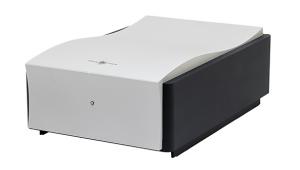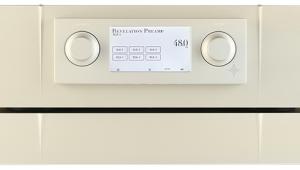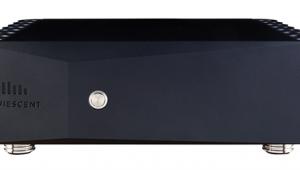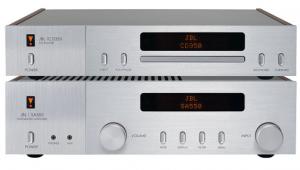NAD D 3020 V2 amplifier Page 2
![]() Punch 'N Scale
Punch 'N Scale
This analogue Class D design may use radically different technology to that found in the original '70s model, but it still manages to successfully convey the essence of the classic integrated's sound. It has a lively, upbeat character and demonstrates considerably more power and control over whatever speakers it's partnered with than its limited dimensions or rated power output figure suggest. It has a rich bass quality with a lively midband and an expansive soundstage while treble detail manages to sound clear and smooth yet never forensic.
Listening via the Aux (analogue line) input, refinement and attack were neatly balanced with a 96kHz/24-bit FLAC Qobuz Sublime+ stream of David Byrne's American Utopia. The D 3020 V2 showed off the impressive production while Byrne's vocals were weighty, rich and beautifully placed within an impressively wide soundstage, supporting instruments located back and beyond the plane of the speakers.
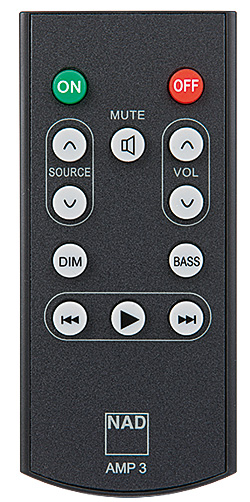 'Everybody's Coming To My House' hammered along. The bassline wasn't especially deep, but it tied the whole song together and helped the D 3020 V2 reveal the track's all-important sense of speed. The amp's rated 30W output may not appear generous [see PM's Lab Report], but it seemed capable of handling most speakers you might reasonably expect it to and drive them in a way that allowed the music's pace to be relayed effortlessly.
'Everybody's Coming To My House' hammered along. The bassline wasn't especially deep, but it tied the whole song together and helped the D 3020 V2 reveal the track's all-important sense of speed. The amp's rated 30W output may not appear generous [see PM's Lab Report], but it seemed capable of handling most speakers you might reasonably expect it to and drive them in a way that allowed the music's pace to be relayed effortlessly.
The delicacy of Fleet Foxes' 'Oliver James' – a 44kHz/16-bit FLAC file on Tidal – was handled extremely well and the soaring vocal solo at the end of the track was anchored to the centre of the soundstage. The track was also delivered with a wonderful sense of three dimensionality.
Only when leaning hard on the D 3020 V2 by asking it to play David Bowie's 'Girl Loves Me' [96kHz/24-bit FLAC from highresaudio.com] did the presentation become a little congested and matter of fact with the vocal – although the punch and drive of the music remained intact and engaging throughout.
Moving On Up
Interestingly, there was a discernible difference between the digital and analogue inputs. With a Quad Elite CDS CD player [HFN Jan '11] used as source with both connections in turn, the performance via the optical digital input was a tad more forward and well lit than when the RCA aux input was used. This wasn't so severe as to make one sound significantly better than the other, but I did find myself leaning towards the RCA aux input over the digital one.
This extended to the aptX Bluetooth connectivity – Apple's AirPlay is no longer supported – which initially sounded pretty impressive. But closer listening revealed that it could sound slightly thin and edgy at times, Chaka Kahn's 'Ain't Nobody' lacking some of the tonal richness and body evident when using sources that are connected via the wired inputs.
The headline news for the D 3020 V2 is the inclusion of the moving-magnet phono stage. Connected to a Rega Planar 3 turntable fitted with an Elys 2 cartridge, the D 3020 V2 managed to successfully convey the character of the deck. Massive Attack's Mezzanine [Circa] enjoyed the drive and potency that vinyl playback really deserves, resulting in a highly convincing stereo image on the soaring 'Angel' with great scale and without any sense of strain.
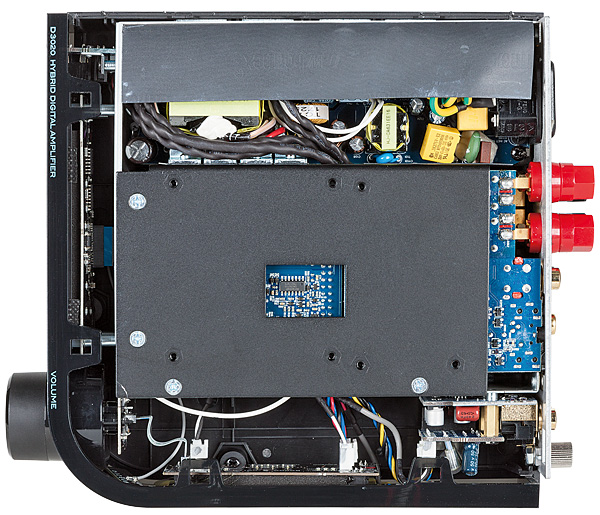
It sounds fun too, Paul Simon's 'You Can Call Me Al' from the album Graceland [Warner Bros] was fast on its feet and connected on an emotional level, drawing me in rather than simply coming across as background music. Spinning Blondie's 'Heart Of Glass' from the album Parallel Lines [Chrysalis], Chris Stein's guitar riff scythed through the twisted disco beat while Debbie Harry's vocals were spotlit to impressive effect thanks to the D 3020 V2's likeable midband clarity.
Noise levels were perfectly acceptable for a built-in phono stage at the price. It was entirely free from hum with my set-up, but the relative difference in gain meant the phono stage input was considerably down on the level of the digital inputs, for example. While the inclusion of a MM phono stage arguably makes the D 3020 V2 more practical for the modern market, there is a sense that it is designed more for the occasional vinyl listener than serious devotee. If you are looking to buy an amp with a view to listening to vinyl as your primary format, a little more money will go a long way.
Hi-Fi News Verdict
A modern take on an integrated amplifier, the NAD D 3020 V2 makes considerable sense at the price. Its improved ergonomics and design are superb, and it has a propulsive and balanced sound that plenty of entry-level audio fans will love. Some will miss the USB input on a design that appears destined for a desktop, but for those balancing analogue and digital sources this is a classic starter amp in the making.






